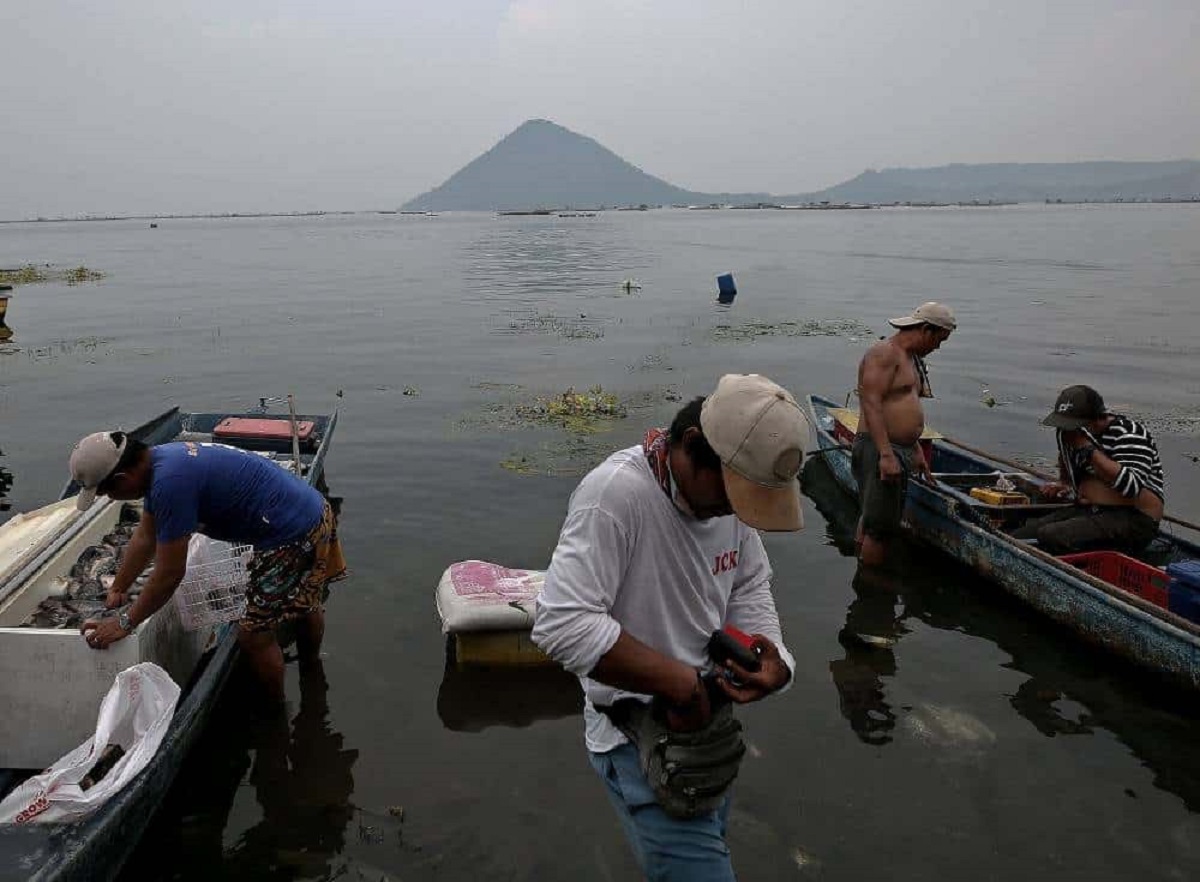Metro Manila ‘haze’ likely due to pollution not Taal vog – Phivolcs

Residents go on their daily life amid volcanic smog or vog from Taal Volcano in Agoncillo, Batangas., on August 19, 2024 Classes were suspended on some towns in the province due to the vog. The observed Metro Manila “haze” is “likely due to local pollutants” and not vog from Taal Volcano, according to the Philippine Institute of Volcanology and Seismology (Phivolcs). INQUIRER PHOTO / RICHARD A. REYES
MANILA, Philippines — The observed haze in Metro Manila is “likely due to local pollutants” and not vog, according to the Philippine Institute of Volcanology and Seismology (Phivolcs).
“For the past few days, the wind speed has been very low for the past three days or four days in Metro Manila. Now, the haze that we’re observing is likely due to local pollutants, hindi ito vog (this is not vog),” Phivolcs Director Teresito Bacolcol said in an interview with INQUIRER.net on Tuesday.
Bacolcol explained that wind speed has an impact on the dispersal of pollutants within Metro Manila.
“The slowing speed has also prevented these pollutants from dispersing vertically. That’s the reason why these pollutants will remain from the lower levels and create the haze na nakikita natin (that we see),” he added.
He also likened the pollutants in Metro Manila to the phenomenon of sulfur dioxide emitted by the Taal Volcano.
“It’s the same phenomenon din po sa Batangas but unlike sa Batangas, dahil sa sulfur dioxide, hindi makaangat. Dito naman sa atin, ang hindi makaangat ay ‘yong pollutants… ‘Yon [in Batangas] talaga ‘yong vog. Dito sa atin, is smog,” he pointed out.
(It’s the same phenomenon in Batangas but unlike in Batangas, the sulfur dioxide cannot rise. Meanwhile, what cannot rise here are pollutants. Vog persists in Batangas, while it is smog that we see here.)
READ: DOH warns public vs health risks of Taal vog
Vog, also known as volcanic smog, contains droplets that carry volcanic gases such as sulfur dioxide that can irritate the eyes, throat, and respiratory tract. Meanwhile, smog is derived from smoke and fog and can also reduce visibility.
Phivolcs on Monday reported the emission of 3,355 metric tons of sulfur dioxide rising some 2,400 meters above Taal Volcano Island. It, however, said the volcano’s unrest is unlikely to develop into a magmatic eruption.
Bacolcol further explained that the persistence of smog in Metro Manila is unpredictable due to several factors such as the wind speed and chances of rain.
“‘Yong presence ng smog, it’s the same kung paano madisperse ‘yung vog sa Batangas. Halos the same lang din siguro ‘yung process nila but it’s hard to say, it depends on such unpredictable several factors such as ‘yung wind speed, kapag uulan o hindi, and then of course, ‘yon ‘yong basically hindi natin masasabi kung kailan,” he said.
(The presence of smog, it’s the same process as how the vog in Batangas disperses. But it’s hard to say, it depends on several unpredictable factors such as wind speed, chances of rain, and, of course, we cannot say when.)
“Kapag umulan, ‘yong pollutants, mawa-wash out ‘yan,” he added.
(If it rains, the pollutants will be washed out.)
READ: Classes suspended, public urged to mask up as Taal ‘vog’ spreads
On the possibility of vog reaching Metro Manila, Bacolcol said it would depend on wind direction.
“Depende po ‘yan sa wind direction and pwede po kapag north ‘yung winds and sustained and then pwede po ‘yan kumalat sa Metro Manila,” he noted.
(It depends on the wind direction and if the winds are headed north and sustained, then it is possible to reach Metro Manila.)
According to Bacolcol, Phivolcs received a report Tuesday morning that vog remains present in Batangas towns such as Laurel, San Nicolas, Agoncillo, Talisay, Balete, Lemery, Cuenca, Lipa, Taal, Lian, and Nasugbu.
On Monday, parts of Calabarzon and Metro Manila suspended classes or shifted to non-face-to-face classes due to the vog from Taal.
Also on Monday, the Department of Education issued a memorandum to affected schools that reads: “In light of the recent eruption of Taal Volcano and the release of vog in the past 24 hours, the Department of Education is authorizing affected schools to suspend classes in the absence of an official announcement from the local government units.”
